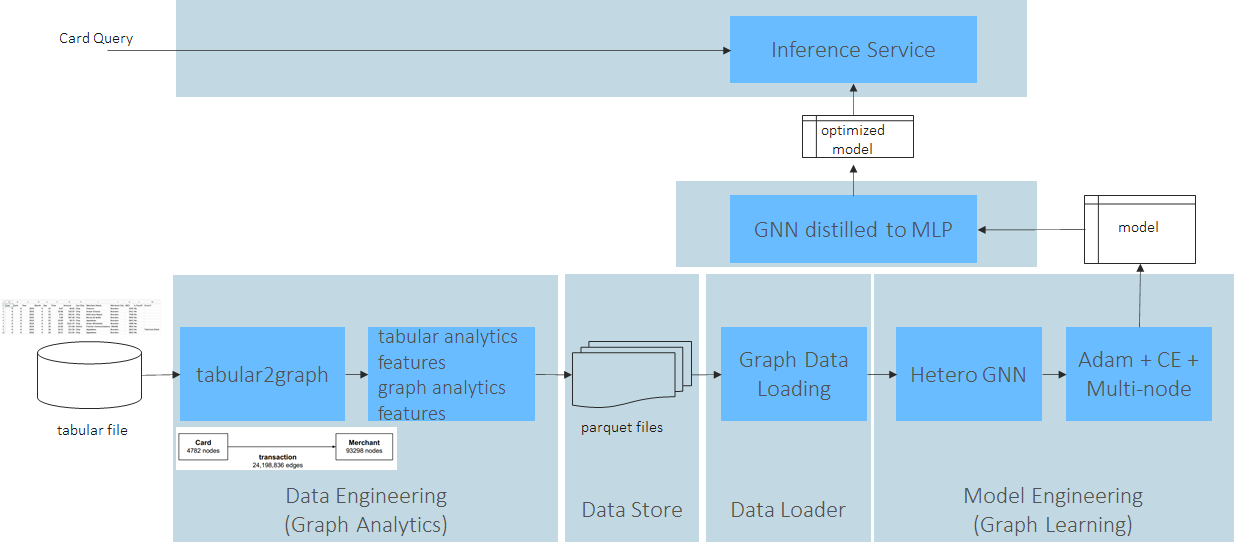GNN 101
GNN 101
Why
Graph无处不在
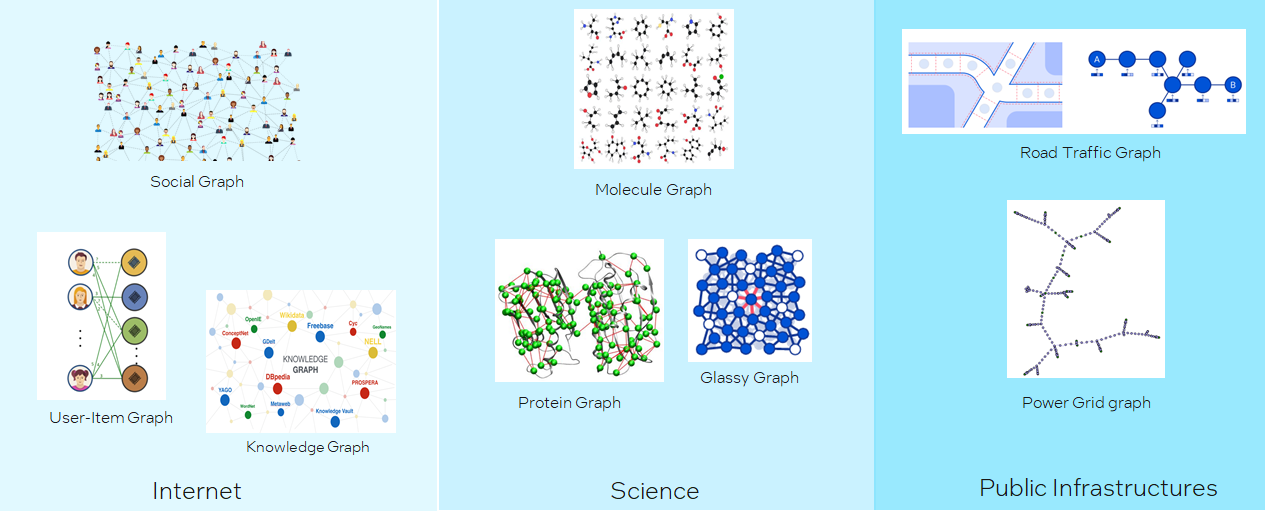
Graph Intelligence helps
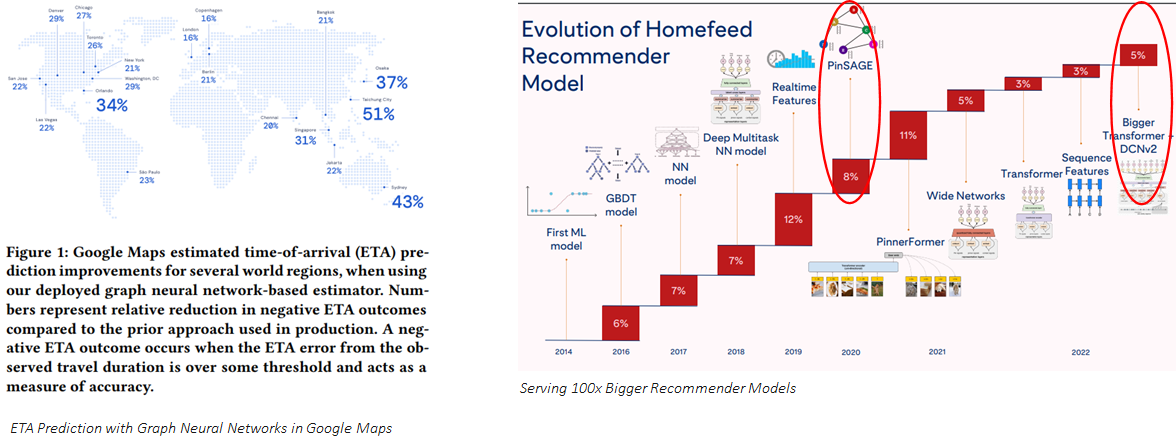
It’s the right time now!
Gartner预测,graph技术在数据和分析创新中的使用率从2021年的10%,到2025年会增长到80%。我们目前正在经历从early adoption到early mainstream的穿越大峡谷期间,既不太早也不太晚,时间刚刚好。
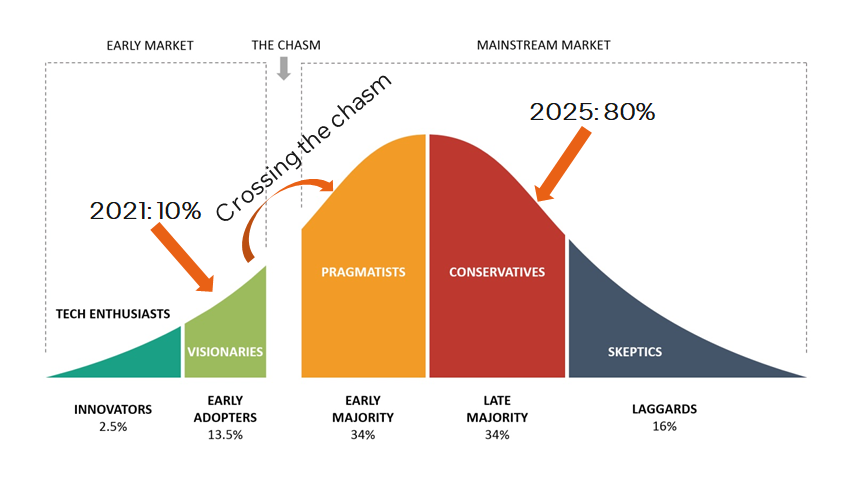
What
如何建模图
A graph is an ordered pair = (, ) comprising:
, a set of vertices (or nodes)
⊆{(,)|,∈}, a set of edges (or links), which are pairs of nodes
Example:
Different Types of Graph
Are edges directed?
Directed Graph vs. Undirected GraphAre there multiple types of nodes or multiple types of edges?
Homogeneous Graph vs Heterogeneous Graph
如何表示图
不同的表示方式会指向不同的计算模式。

如何计算图
如下图所示,图的计算步骤如下:
遍历图中的所有结点,或者采样图中的一些结点。每次选择其中一个结点,称为目标结点(target node);
一个-层的GNN至少需要聚合目标结点的L-跳领域的信息。因此,我们需要以围绕目标结点构造一个L-跳的ego network。图中是一个2-跳ego network的例子,其中绿色结点是第1跳,蓝色结点是第2跳;
计算并更新ego-network里的每个结点的embedding。embeddings会使用到图的结构信息和结点与边的特征。
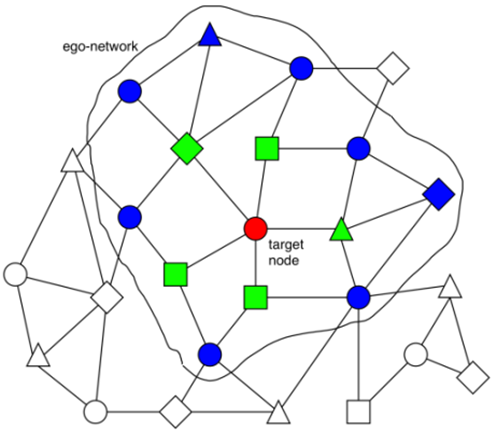
那么,这些embedding是如何计算和更新的呢?主要是使用Message Passing的计算方法。Message Passing有一些计算范式如GAS(Gather-ApplyEdge-Scatter), SAGA(Scatter-ApplyEdge-Gather-ApplyVertex)等。我们这里介绍归纳得比较全面的SAGA计算范式。假设需要计算和更新下图中的 :
:
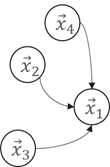
Scatter
Propagate message from source vertex to edge.
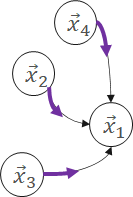
ApplyEdge
Transform message along each edge.
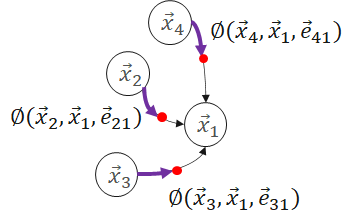
Gather
Gather transformed message to the destination vertex.
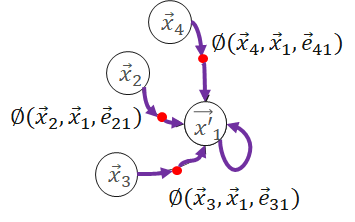
ApplyVertex
Transform the gathered output to get updated vertex.

公式如下:

分析一下,会发现,SAGA模式中ApplyEdge和ApplyVertex是传统deep learning中的NN(Neural Network)操作,我们可以复用;而Scatter和Gather是GNN新引入的操作。即,Graph Computing = Graph Ops + NN Ops。
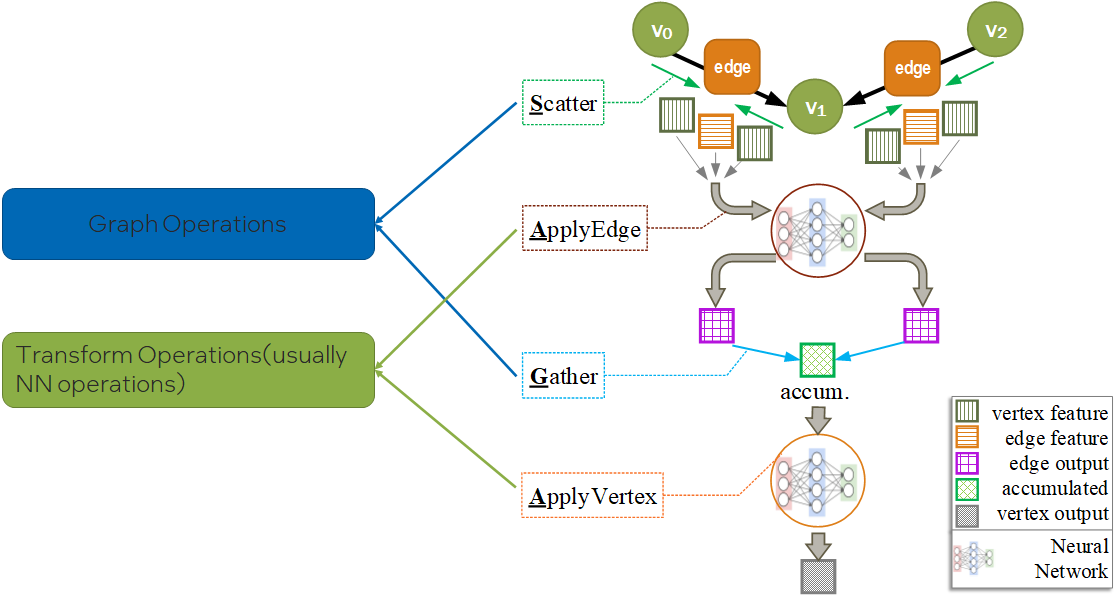
不同的图数据集规模
One big graph
可能高达数十亿的结点,数百亿的边。

Many small graphs

不同的图任务
Node-level prediction
预测图中结点的类别或性质
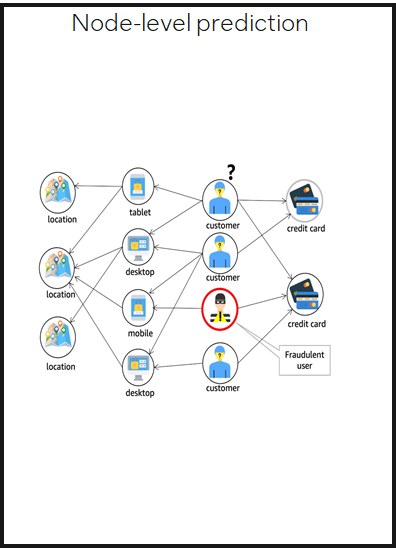
Edge-level prediction
预测图中两个结点是否存在边,以及边的类别或性质
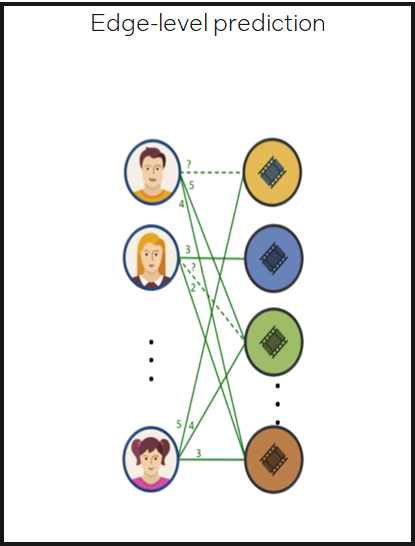
Graph-level prediction
预测整图或子图的类别或性质
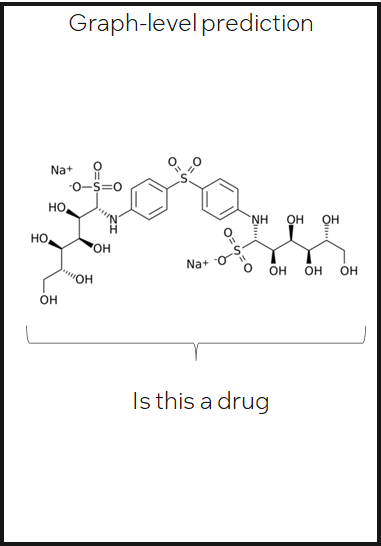
How
Workflow
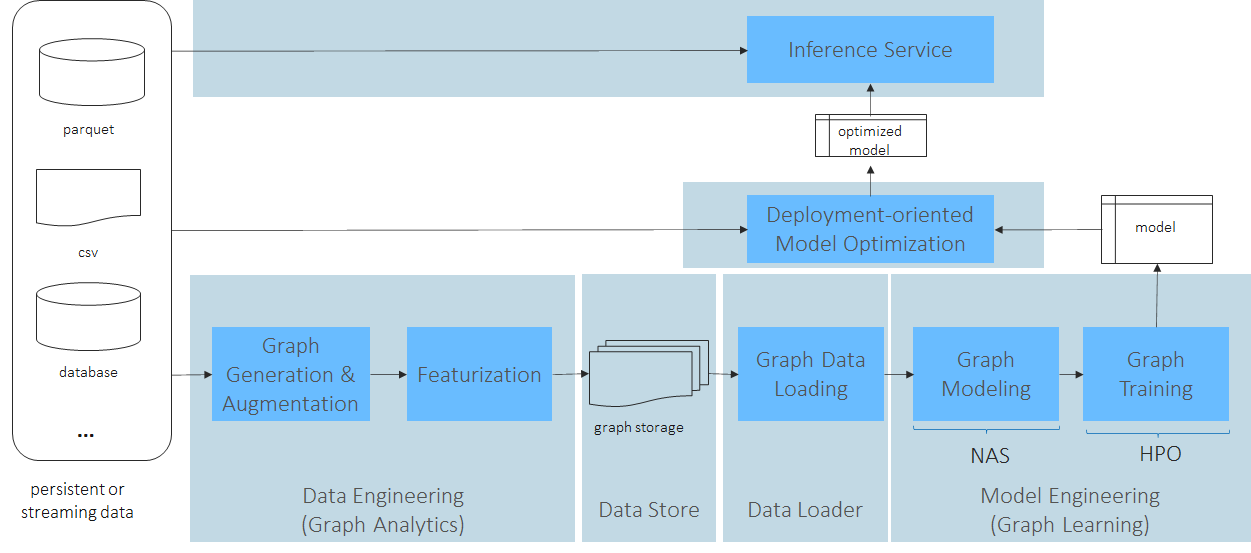
以fraud detection为例:
Tabformer数据集
workflow
软件栈
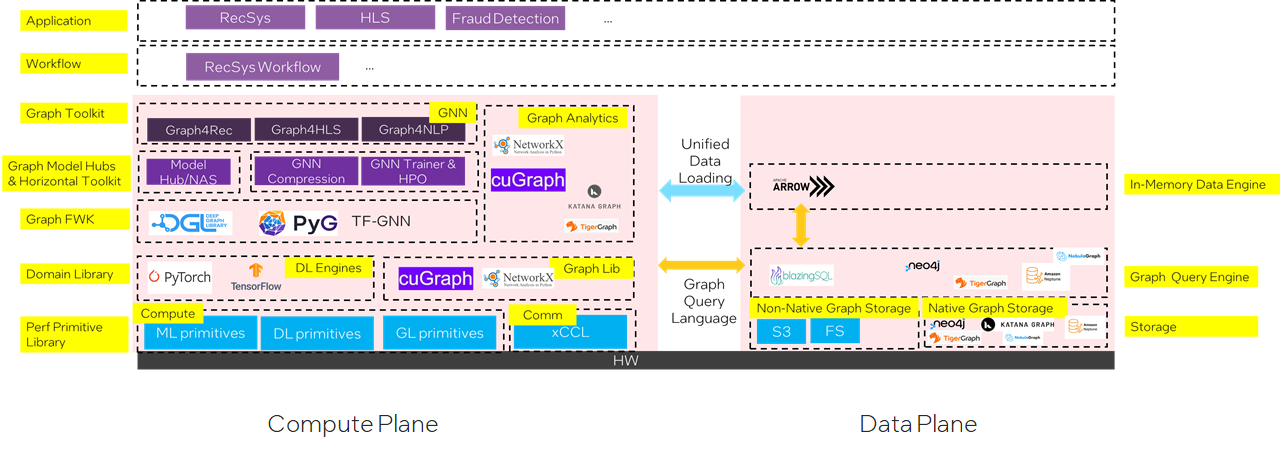
计算平面
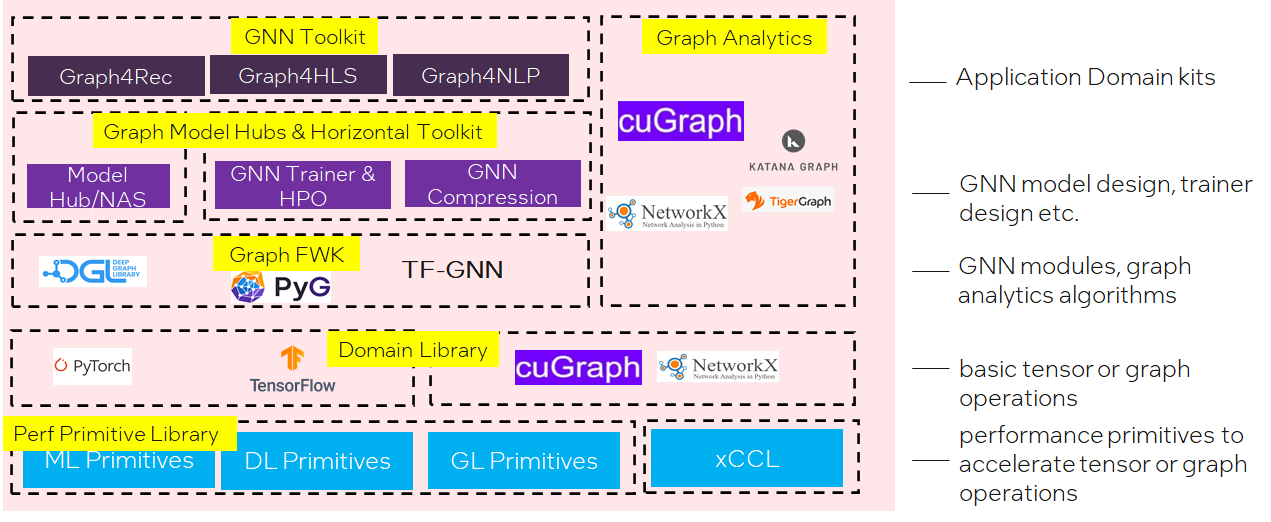
数据平面
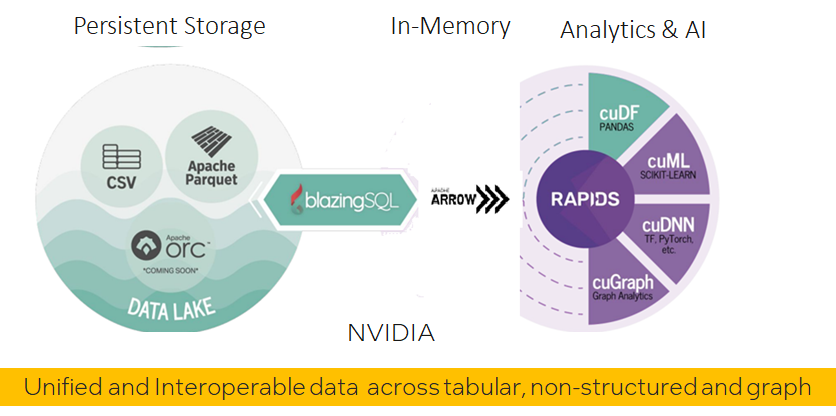
SW Challenges
Graph Sampler
For many small graphs datasets, full batch training works most time. Full batch training means we can do training on whole graph;
When it comes to one large graph datasets, in many real scenarios, we meet Neighbor Explosion problem;
Neighbor Explosion:
Graph sampler comes to rescue. Only sample a fraction of target nodes, and furthermore, for each target node, we sample a sub-graph of its ego-network for training. This is called mini-batch training.
Graph sampling is triggered for each data loading. And the hops of the sampled graph equals the GNN layer number . Which means graph sampler in data loader is important in GNN training.

Challenge: How to optimize sampler both as standalone and in training pipe?
When graph comes to huge(billions of nodes, tens of billions of edges), we meet new at-scale challenges:
How to store the huge graph across node? -> graph partition
How to build a training system w/ not only distributed model computing but also distributed graph store and sampling?
How to cut the graph while minimize cross partition connections?
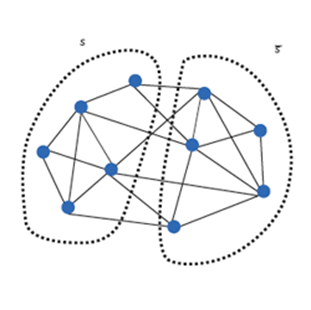
A possible GNN distributed training architecture:
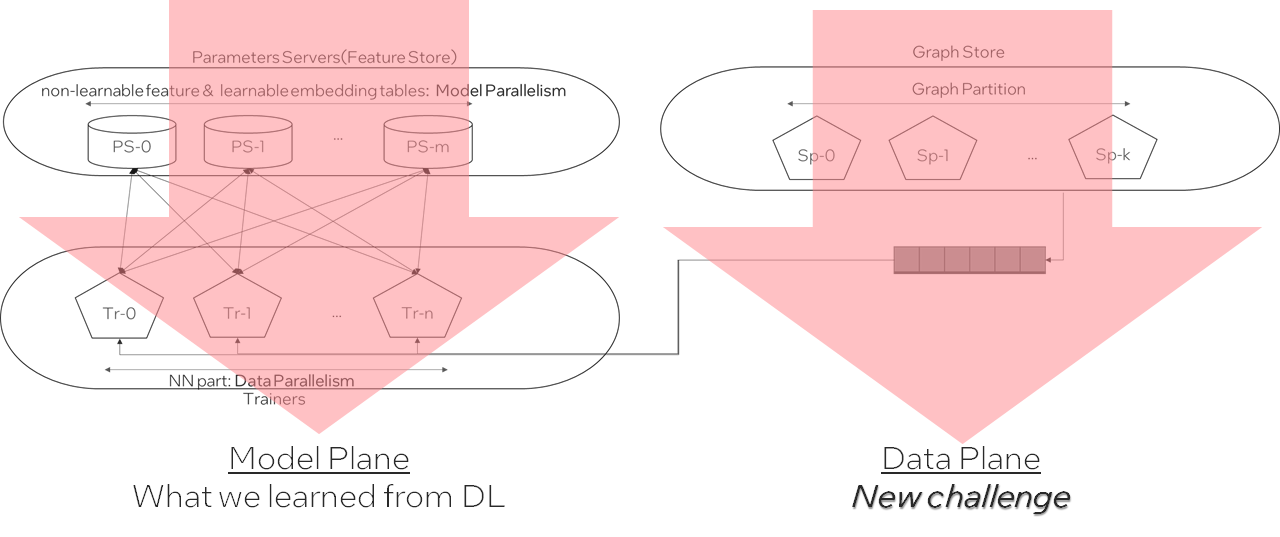
Scatter-Gather
Fuse adjacent graphs ops
One common fuse pattern for GCN & GraphSAGE:

Challenge:
How to fuse more GNN patterns on different ApplyEdge and ApplyVertex,automatically?How to implement fused Aggregate
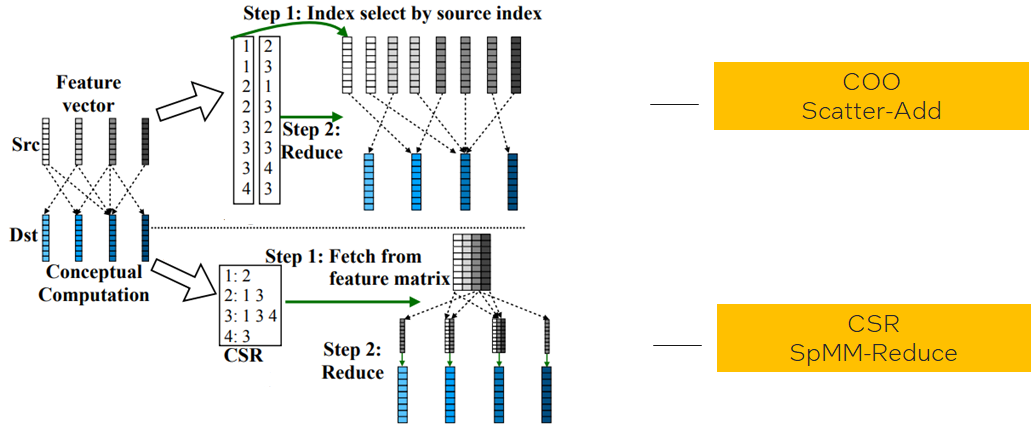
Challenge:Different graph data structures lead to different implementations in same logic operations;
Different graph characteristics favors different data structures;(like low-degree graphs favor COO, high-degree graphs favor CSR)
How to find the applicable zone for each and hide such complexity to data scientists?
More
Inference challenge
GNN inference needs full batch inference, how to make it efficient?
Distributed inference for big graph?
Vector quantization for node and edge features?
GNN distilled to MLP?
SW-HW co-design challenge
How to relief irregular memory access in scatter-gather?
Do we need some data flow engine for acceleration?
…
Finishing words
“There is plenty of room at the top” 对技术人员很重要。但为避免入宝山而空返,我们更需要建立起技术架构,这就像是地图一样,只有按图索骥才能更好地探索和利用好top里的plenty of room。

References
Graph + AI: What’s Next? Progress in Democratizing Graph for All
Recent Advances in Efficient and Scalable Graph Neural Networks
Understanding and Bridging the Gaps in Current GNN Performance Optimizations
Understanding GNN Computational Graph: A Coordinated Computation, IO, And Memory Perspective
fuseGNN: Accelerating Graph Convolutional Neural Network Training on GPGPU
VQ-GNN: A Universal Framework to Scale up Graph Neural Networks using Vector Quantization
NeuGraph: Parallel Deep Neural Network Computation on Large Graphs
Completing a member knowledge graph with Graph Neural Networks
PinnerFormer: Sequence Modeling for User Representation at Pinterest
GNN 101的更多相关文章
- 了解 ARDUINO 101* 平台
原文链接 简介 作为一名物联网 (IoT) 开发人员,您需要根据项目的不同需求,选择最适合的平台来构建应用. 了解不同平台的功能至关重要. 本文第一部分比较了 Arduino 101 平台和 Ardu ...
- Entity Framework 6 Recipes 2nd Edition(10-1)译->非Code Frist方式返回一个实体集合
存储过程 存储过程一直存在于任何一种关系型数据库中,如微软的SQL Server.存储过程是包含在数据库中的一些代码,通常为数据执行一些操作,它能为数据密集型计算提高性能,也能执行一些为业务逻辑. 当 ...
- 虚拟 router 原理分析- 每天5分钟玩转 OpenStack(101)
上一节我们创建了虚拟路由器"router_100_101",并通过 ping 验证了 vlan100 和 vlan101 已经连通. 本节将重点分析其中的原理. 首先我们查看控制节 ...
- VS:101 Visual Studio 2010 Tips
101 Visual Studio 2010 Tips Tip #1 How to not accidentally copy a blank line TO – Text Editor ...
- 【Mocha.js 101】钩子函数
前情提要 在上一篇文章<[Mocha.js 101]同步.异步与 Promise>中,我们学会了如何对同步方法.异步回调方法以及 Promise 进行测试. 在本篇文章中,我们将了解到 M ...
- 【Mocha.js 101】同步、异步与 Promise
前情提要 在上一篇文章<[Mocha.js 101]Mocha 入门指南>中,我们提到了如何用 Mocha.js 进行前端自动化测试,并做了几个简单的例子来体验 Mocha.js 给我们带 ...
- [nginx] connect() failed (111: Connection refused) while connecting to upstream, client: 101.18.123.107, server: localhost,
nginx一直报错, 2016/12/02 10:23:19 [error] 1472#0: *31 connect() failed (111: Connection refused)while c ...
- 学习 Linux,101: Linux 命令行
概述 本教程将简要介绍 bash shell 的一些主要特性,涵盖以下主题: 使用命令行与 shell 和命令交互 使用有效的命令和命令序列 定义.修改.引用和导出环境变量 访问命令历史和编辑工具 调 ...
- UVa 101 The Blocks Problem Vector基本操作
UVa 101 The Blocks Problem 一道纯模拟题 The Problem The problem is to parse a series of commands that inst ...
随机推荐
- ARC120D Bracket Score 2 (模拟)
题面 给一个长度为 2 N 2N 2N 的序列 A A A,定义一个长度为 2 N 2N 2N 的合法括号序列的 得分(score) 为: 对于每对配对的括号 i , j i,j i,j, ∣ A i ...
- 轻量级消息队列 Django-Q 轻度体验
前言 最近做的这个项目(基于Django),需要做个功能,实现定时采集车辆定位. 这让我想起来几年前那个OneCat项目,当时我用的是Celery这个很重的组件 Celery实在是太重了,后来我做公众 ...
- 排序算法整理C++(初赛)
排序算法整理 常见考点 将一个乱掉的字符串排回有序(以交换为基本操作)的最少操作,就是冒泡排序. 排序算法的稳定性 排序算法的时间复杂度 排序算法的稳定性 稳定性是指排序前两个元素a1 = a2,a1 ...
- Linux_tail总结
tail 命令用法 功能从尾部显示文件若干行 语法: tail [ +/- num ][参数] 文件名 使用tail命令的-f选项可以方便的查阅正在改变的日志文件,tail -f filename会把 ...
- Oracle PLM,协同研发的产品生命周期管理平台
官网:Oracle PLM - 方正璞华 适用企业:电子高科技.机械制造.医疗器械.化工行业等大型企业和中小型企业 咨询热线:4006-160-730 申请试用.预约演示.产品询价 邮箱:jiangc ...
- SpringSecurity基本使用
SpringSecurity web 安全管理框架 需要依赖多 shiro 轻量 SSM+Shiro SpringBoot/SpringCloud+SpringSecurity 配置用户名密码 配置文 ...
- 关于使用kubeoperator搭建k8s集群使用containerd作为容器运行时,从自己搭建的habor仓库拉取镜像的有关说明
1.kubepi界面添加habor仓库信息,并授权给k8s集群 这一步的操作是当在工作负载选择从harbor仓库拉取镜像时会自动创建有关的secrets信息,从而不用事先手动创建了(有别于kuboar ...
- 内网部署YApi
官网地址:https://hellosean1025.github.io/yapi/devops/index.html 环境要求 nodejs(7.6+) mongodb(2.6+),安装看这篇文章: ...
- 图解 Kubernetes Ingress
文章转载自:https://www.qikqiak.com/post/visually-explained-k8s-ingress/ 原文链接: https://codeburst.io/kubern ...
- 第六章:Django 综合篇 - 1:配置 Django
Django项目的设置文件位于项目同名目录下,名叫settings.py.这个模块,集合了整个项目方方面面的设置属性,是项目启动和提供服务的根本保证. 一.简述 settings.py文件本质上是一个 ...



